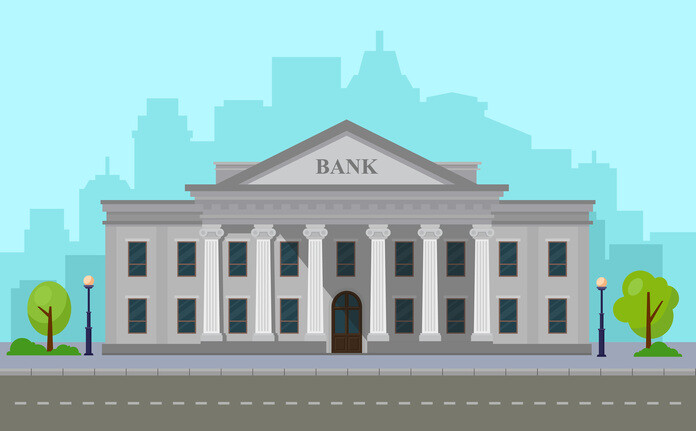The banking industry operates in a challenging market environment. Some of the challenges they face are macroeconomic unpredictability and declining demand. Despite this, many small and mid-sized banks continue to perform admirably in their main operations. Union Bankshares, Inc. (NASDAQ:UNB) is a prime example. It began the year strong with consistent performance. It maintained revenue growth while being viable.
Although margins have shrunk, actual returns have remained strong. It also maintained adequate capacity to continue operations. Its outstanding Balance Sheet demonstrates impressive liquidity and sustainability. Unsurprisingly, it keeps increasing dividend payouts with appealing yields. Meanwhile, the stock price decline has separated it from the fundamentals. However, its obvious undervaluation provides it with a significant upside potential.
Company Efficiency
Banks such as Union Bankshares, Inc. are now more exposed to macroeconomic risk. They work in a highly volatile market environment. Fears of a recession increased with the failure of various-sized banks. Indeed, the banking crisis should not be overlooked. The most well-known was the demise of the Silicon Valley Bank. Despite this, some banks attempt to demonstrate their ability to stay afloat in the face of market shocks. Their operations may have taken a beating, but their comeback potential and portfolio management remain strong. UNB continues to demonstrate its ability to endure external constraints that limit its growth potential.
Its operating revenue was $13.04 million, a 34% rise year on year. More importantly, revenues increased consistently over the course of five quarters. Loans and investments are the primary sources of revenue for a bank. Both of these generate income in the form of interest. Loans remained its principal driving factor, accounting for more than 80% of total revenues. The remainder was made up of its investment securities and deposits with other banks.
It is important to remember that interest rate increases played a significant role in this. They resulted in greater loan yields and increased loan interest income. However, it is more crucial to examine its operational methods that took advantage of the scenario. First, its aggressive loan repricing assisted it in improving loan flexibility. Despite rising interest rates, it made loan demand, volume, and yields more manageable. Second, it kept its loan portfolio diversity efficient and conservative.
Its loan compositions were proportionately shared. C&I and CRE loans accounted for over 70% of loans in many banks of their size. However, UNB’s CRE and C&I loans accounted for only 43% of total loans. The remainder came from residential loans (37%), construction (11%), and municipal loans (9%). What was more striking was that the majority of its loans were for real estate.
Indeed, 87% of loans were commercial, residential, or construction loans. Given the potential fluctuations in the real estate market, it can be dangerous. However, there are numerous prospects in the sector, which we shall explore later. Furthermore, because real estate is still a macroeconomic staple, real estate loans can have higher yields. Third, it maintained its cautious approach to loan growth in order to reduce the risk of defaults and delinquencies. It is linked to loan repricing and prompt modifications in credit loss reserves.
Its smart investment portfolio management also contributed to its consistent revenue development. 14% of its interest income comes from investment securities and deposits. As a result, their composition was critical for the company. Fortunately, government and quasi-government institutions backed 97% of its investment instruments. They arrived in the form of bonds, notes, and debentures, which are more appropriate in a high-interest economy. They can have higher yields and act as hedges against price declines.
Similarly, increasing inflation and interest rates had a negative influence. They increased the cost of deposits and borrowings, resulting in greater interest costs. Interest expenses more than doubled in a year. The fraction of interest expense to interest revenue increased from 8% to 24%. In the non-interest section, the pattern was similar. Non-interest income and expense both increased, but the latter was more significant. The operating margin fell from 29% to 26%, as expected. Nonetheless, operating income increased from $2.9 million to $3.4 million. It remained profitable because UNB generated larger returns to fund its core operations.
The corporation may experience similar difficulties this year. Interest rate hikes may still occur, affecting loan, investment, deposit, and borrowing returns. Despite this, market opportunities remain as inflation begins to ease. To stabilize its performance, the corporation must establish how to manage and diversify its portfolio. We will go through it in further detail in the following section.
How Union Bankshares, Inc. Might Survive This Year
As recession fears persist, the banking situation intensifies. Despite this, we observed Union Bankshares, Inc. exercising care in its operations. However, before it can breathe a sigh of relief, it must account for every risk that could jeopardize its performance. Interest rate hikes continue to be the most pressing issue for many institutions. While it resulted in better loan yields, it had already reached the point where the dangers outweighed the advantages. Deposits and borrowings may become more expensive if this trend persists. Lenders and investors may become dissatisfied, resulting in decreased yields. Defaults and delinquencies could rise. The only solace we have is that interest rate increases appear to have slowed.
On the contrary, inflation continues to fall quicker than projected. It was already concerning when it reached 9.1% in 2022. However, it has already reduced by 46% to 4.9% today. It is also the lowest inflation rate in the last two years. As a result, it may mitigate the impact of interest rate increases. Positive spillovers could be seen in UNB’s non-interest costs. It will be unable to prevent interest rates from climbing this year.
However, it can at least slow down interest rate increases, making them more tolerable. This allows banks to better manage their yielding assets and liabilities. In two meetings, we observed interest rate increases remain flat at 25 basis points vs 75 basis points in 2022. UNB can also readily reprice and diversify its loans and investments in order to maximize its potential. The company can thus remain viable.
When it comes to real estate loans, UNB must keep an eye on market trends. Property sales slowed in 2022 as prices and borrowing rates reached their peaks. But I still don’t believe there will be a huge crash. Many things must be addressed before reaching such a bleak conclusion. First, property shortages in the United States remain severe, owing to a minor drop in property prices.
The year began with 6.5 million housing unit shortages. However, according to a WSJ study, shortages increased by a factor of two in the first quarter. The US housing market is lacking 7.3 million homes. As a result, it is reasonable to conclude that housing demand continues to outnumber supply, and many individuals are still interested in owning homes. Second, salaries and unemployment are more manageable, resulting in increased borrowing and purchasing power.
It may become obvious if inflation continues to fall. It is conceivable because increases in home prices and mortgage rates were driven by demand rather than cost-push factors such as labor and building materials. Third, property developers, sellers, lenders, and builders remain cautious in the face of another downturn. This behavior has been seen throughout the last decade. And the market today avoids speculative exuberance as well as unethical activities such as overlending and overselling. As a result, price and valuation fluctuations may become more manageable
But it is secure because of its financial status. Its superb Balance Sheet, notably loans and deposits, demonstrates this. Despite being the principal source of revenue, the corporation maintains a conservative approach in order to maintain liquidity. Loans and deposits both increased, but UNB managed to keep them stable to ensure profitability. The loan-to-deposit ratio of 81% indicates that the corporation has sufficient reserves. It can lend more in order to increase loan yields. It may also cover possible defaults and delinquencies. It is even more astonishing now, given that many banks have average ratios of 90-95%. It is still useful in offsetting the enormous increase in deposit and borrowing interest rates. However, the company’s existing interest income and ratio make it a safe and successful investment.
Furthermore, its cash balances remain unchanged at $38.3 million, indicating continued viability. Despite decreased margins, operating income is greater than in the previous quarter. The valuation resulted in a monthly cash burn of $2.22 million. We can estimate that it will take 17 months to exhaust its cash and cash equivalents based on previous data.
It may be a shorter term, but we must remember that UNB does not rely substantially on cash and financial leverage. In contrast to freight, transportation, and construction industries, it is not a capital-intensive company. There are dangers, but they are manageable given the bank’s strong loan-to-deposit ratio. It has enough room to account for any defaults and delinquencies. Furthermore, its investment securities have remained quite steady.
When combined with investments, its worth equals 24% of total assets. They are also more than five times the total amount borrowed. More crucially, its Net Debt/EBITDA ratio is only 2.5x, indicating adequate coverage of operational capacity and borrowings. The company strikes a balance between expansion and viability, as well as sustainability.
Stock Price Evaluation
Union Bankshares, Inc.’s stock price is still declining. It is still disconnected from the fundamentals, but it is understandable given the banking crisis. At $20.5, the stock price is 26% lower than it was last year. And, while stock price growth is modest, there is still room for profit. Given the current BVPS and PB Ratio of 13.43 and 1.57x, we confirm it using the PB Ratio. The target price will be $26.03 if we utilize the current BVPS and the average PB Ratio of 1.93x.
Furthermore, because of its steady payment and significant cash reserves, it is an attractive dividend stock. It offers a high yield of 6.96%, compared to the S&P 600 and NASDAQ averages of 1.72% and 1.59%, respectively. Dividends are also well-protected, as evidenced by the Dividend Payout Ratio of 56%. The DCF Model is used to better estimate the stock price.
The computed value of $32.50 supports the hypothesis of potential undervaluation. In the following 12-18 months, there might be a 58% increase. As a result, investors may take advantage of this opportunity to purchase its shares at a discount.
In Conclusion
Despite the dangers and obstacles it faces, Union Bankshares, Inc. remains a solid and safe firm. It is a long-term bank with effective and smart asset management. It maintains consistent cash levels to finance operations, borrowings, and capital returns. Furthermore, the stock price remains inexpensive, with good upside potential. The stock of Union Bankshares, Inc. is a Buy.
Featured Image: Freepik @ vectorkru








